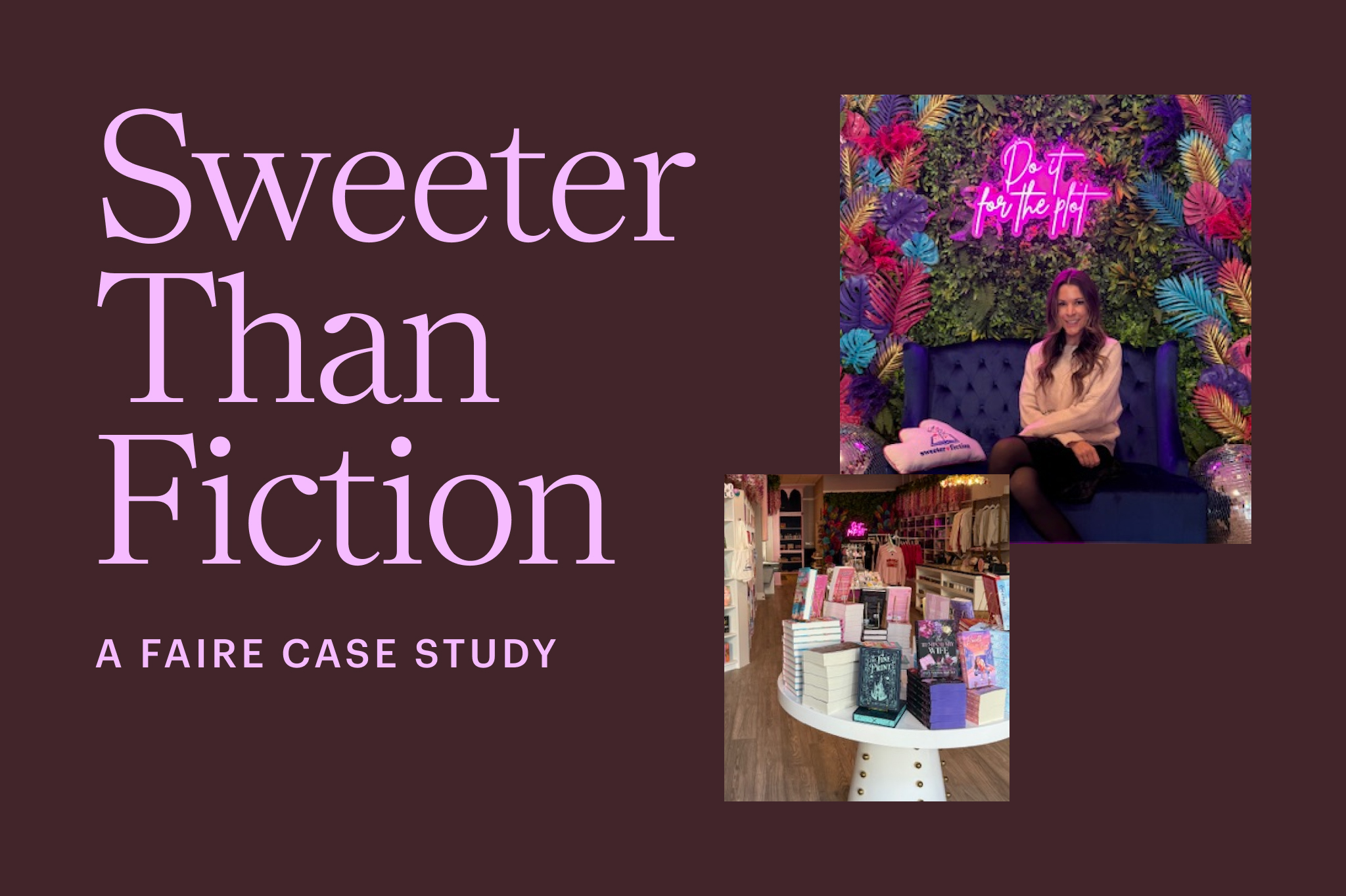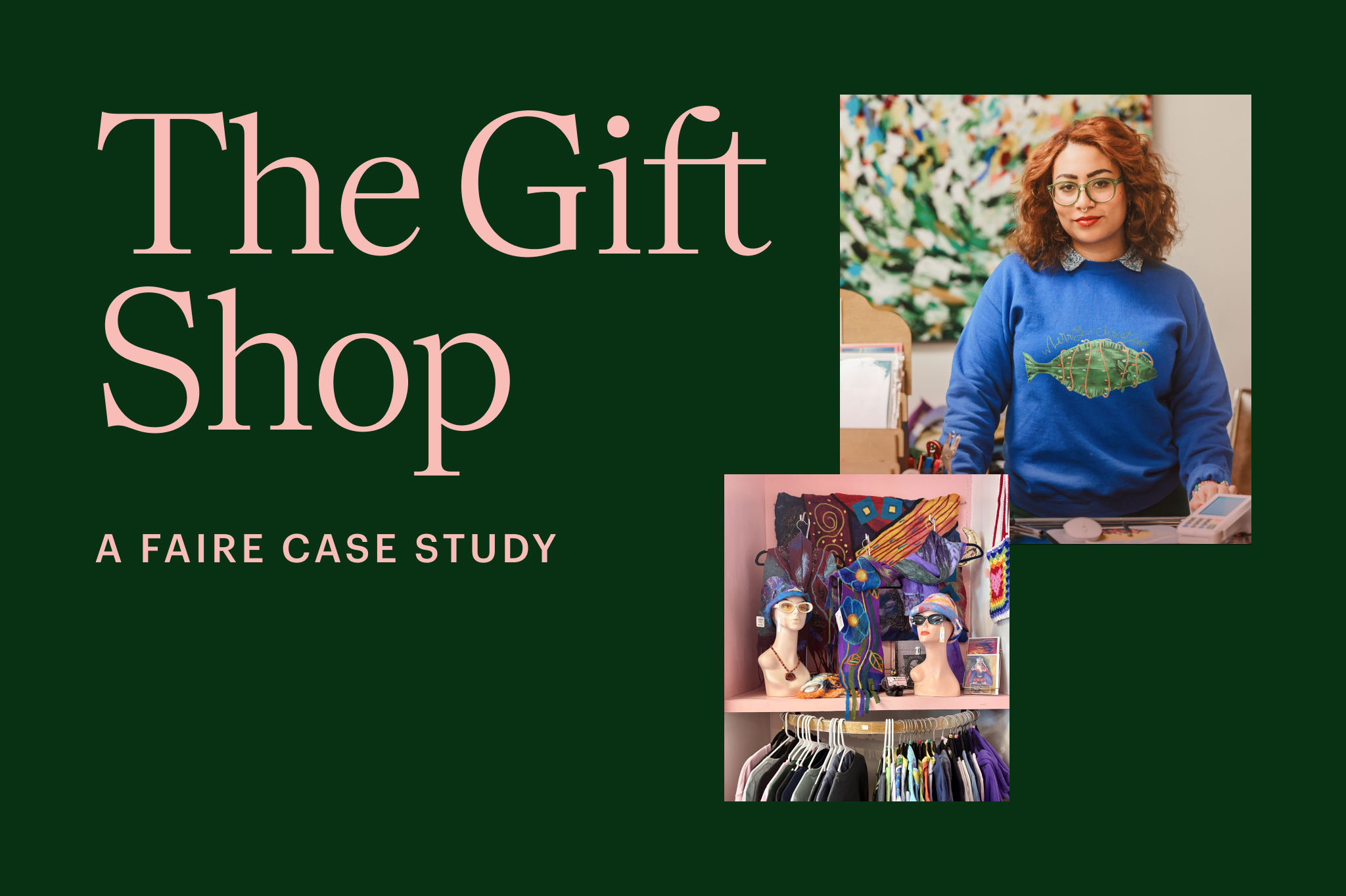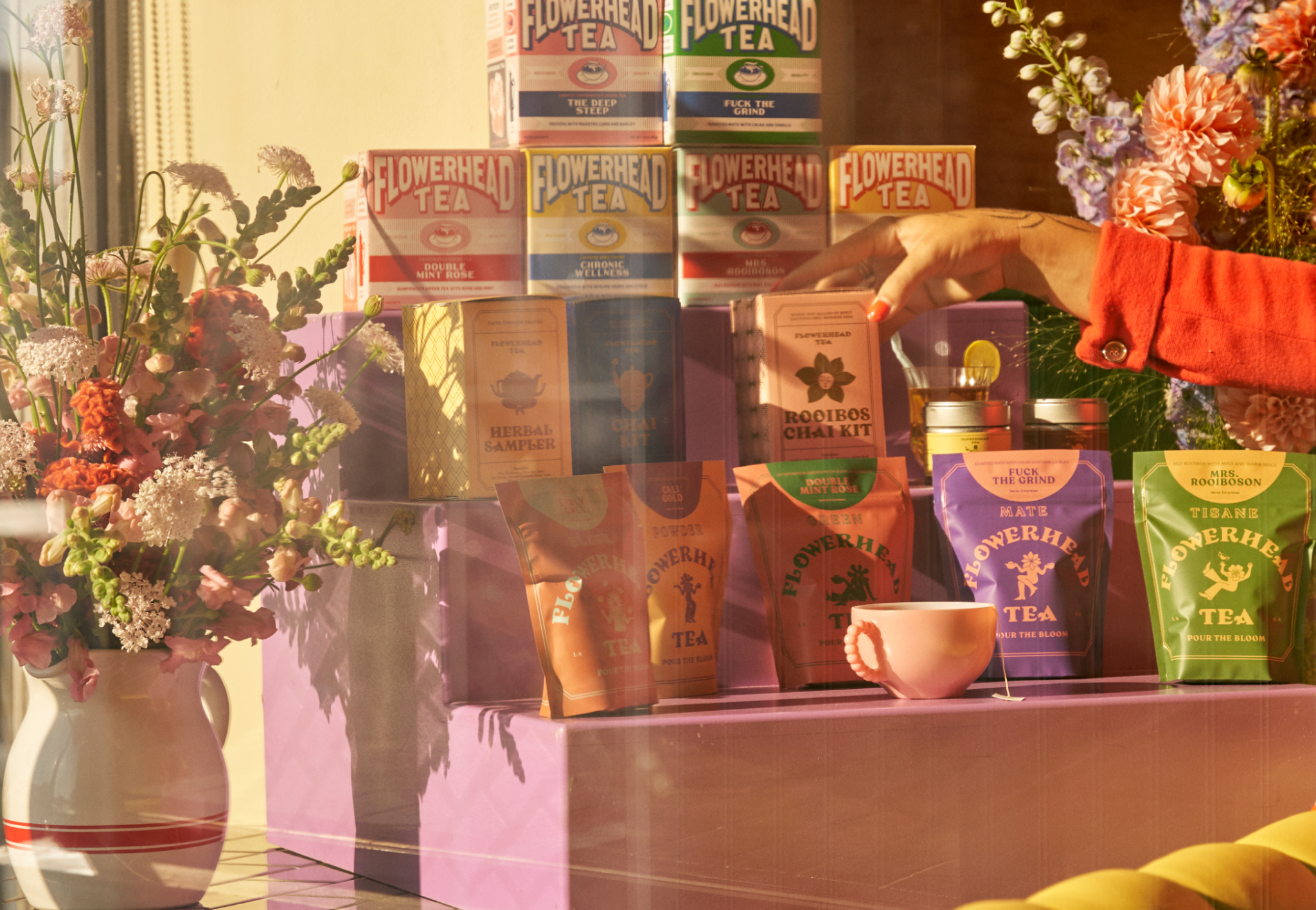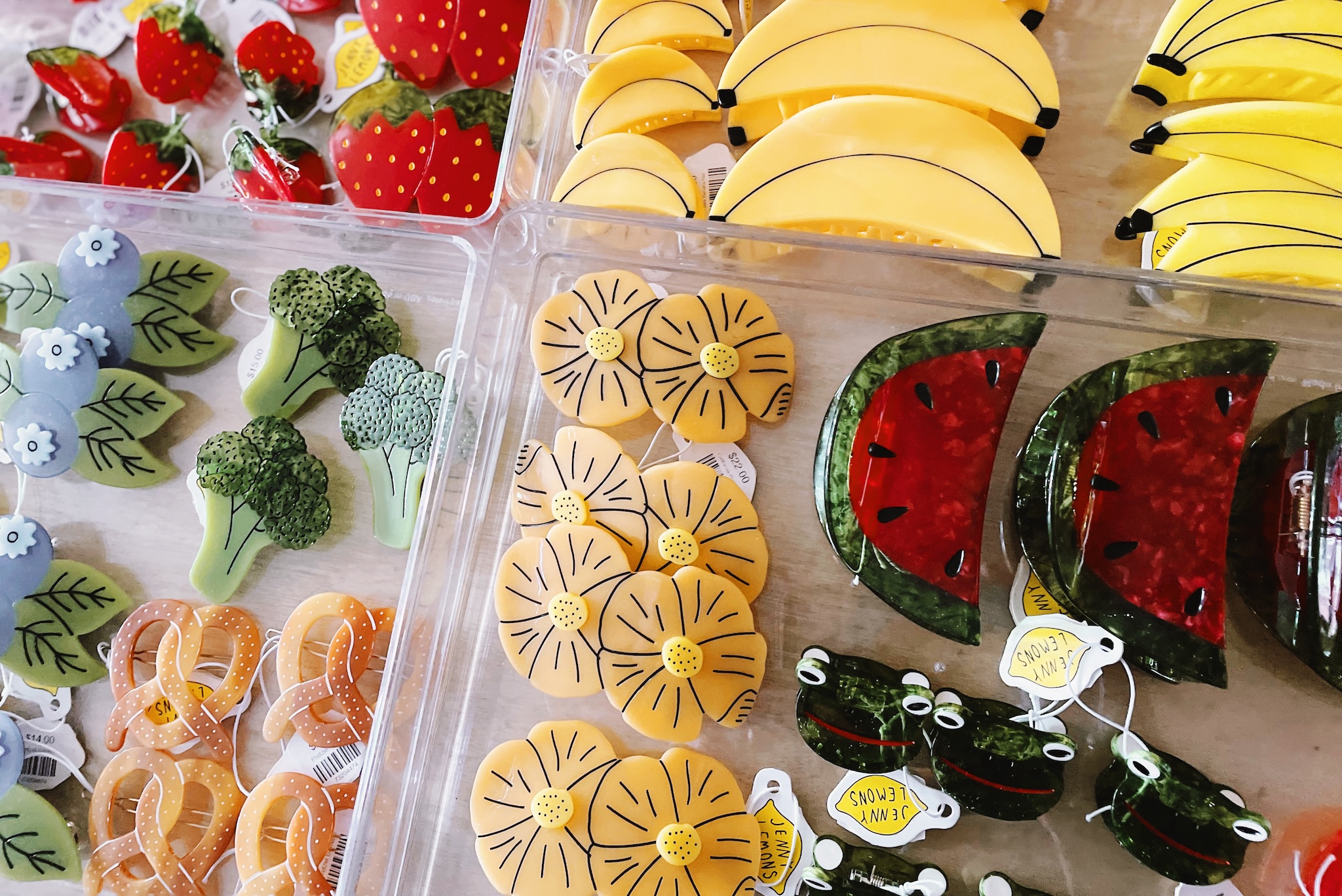
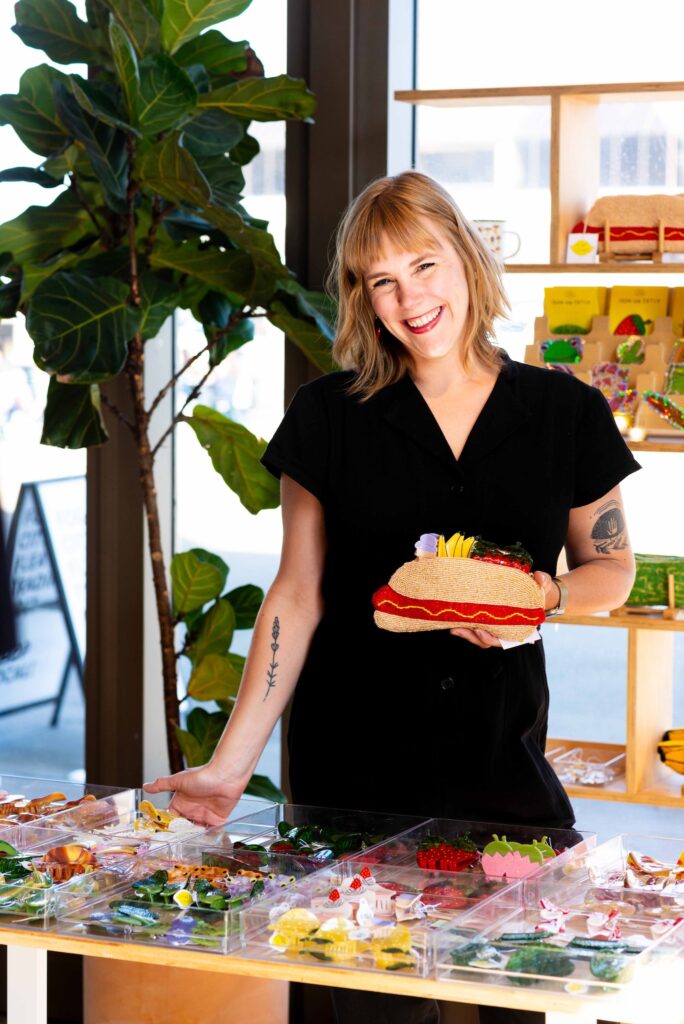
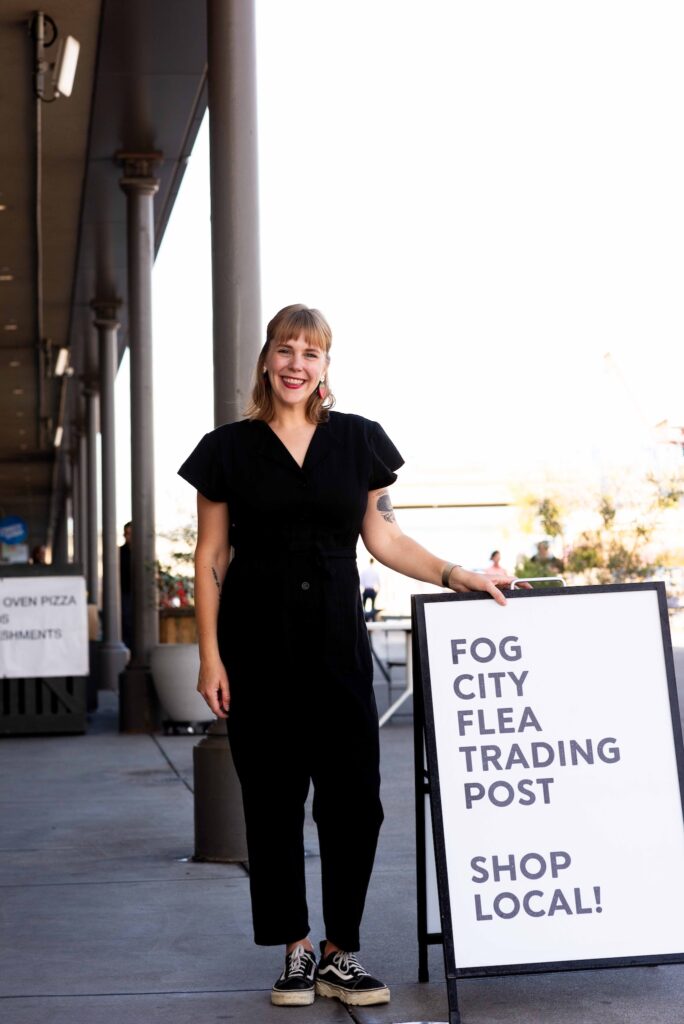
The leap from an online-only business to a brick-and-mortar shop can be a big one, but there’s a middle ground you might consider: the pop-up store. A pop-up is typically a small, temporary retail space used to test a product line or drum up enthusiasm for a new brand. It can also mean taking over a dedicated space within a larger retail location or renting booth space at events.
With a pop-up, you can reap many of the same benefits of owning your own store, but you won’t be on the hook for the more robust financial and logistical considerations of buying or renting a permanent space.
To get some expert advice on pop-up shops, we spoke with the founder of Jenny Lemons, a colorful accessories and creative lifestyle shop. Artist Jennie Lennick founded Jenny Lemons in 2015 with products sold in more than 425 shops worldwide along with collaborations with brands like Ban.do, Urban Outfitters, and Aerie. The business pivoted and found a successful model after the brand’s beloved retail shop in San Francisco’s Mission District closed in the fall of 2023. Jenny Lemons has been popping up in Fog City Flea Trading Post, a home for a variety of vendors inside the San Francisco Ferry Building.
The brand plans to expand to the Mojave Flea Trading Post in Palm Springs. Below, read Jennie’s top tips for finding and adapting to similar spaces where you can showcase your brand and its products to new customers.
Tip #1: Reduced space requires more thoughtful merchandising
When you open a pop-up, chances are you won’t have as much space as a more permanent brick-and-mortar store. This is especially true for retailers that pop up at fairs and farmers markets and brands that, like Jenny Lemons, have a pop-up within a larger retail space that already has its own staff. “I really don’t have the control over the customer experience with the staff as much as I did when I had my own shop, but it’s similar to selling wholesale,” Jennie says. “Fog City is its own business, and they have their own approach, and I’m there as a guest.”

She and her husband do training sessions for the Fog City staff and try to stay extremely organized to set them up for success so they can portray their brand the way they want it to be portrayed. “Our back stock is super organized, and all of our hair claws are organized by style of hair claws,” she adds, “so there’s no friction to get them to do the job I need them to do.”
It’s also important to figure out what your bestsellers are so you know where to focus your merchandising. “You kind of have to put the hits—your best-selling products—at the forefront,” Jennie says. “Part of our partnership with Fog City is that we’re responsible for building our own booth, so I built a booth that showcases my products properly.”
Tip #2: Constantly market your presence
While brick-and-mortar retailers are often able to build a sense of community with their customers and use things like window displays and signage to pull in foot traffic with passersby, Jennie advises that it’s more important to constantly market your presence with a pop-up. It’s also important to set yourself apart from purely online retailers.
“I continuously remind people that I’m in Fog City,” she says. “About once a week on Instagram, I’ll post a reel or a picture from my booth in Fog City, which I think creates context around my brand and makes it clear it’s not just online—this is an in-person experience that you can shop.”
Tip #3: Consider your typical shopper’s profile
Remember to think about the typical shoppers who might find their way to your pop-up shop before opening it. For starters, are they locals, tourists, or a mix of both? Fog City Flea Trading Post is located in the San Francisco Ferry Building Marketplace—an iconic landmark that attracts millions of visitors every year—so there is more than one typical type of shopper. The people who run Fog City Flea have various locations in tourist destinations, which Jennie says is smart because you can attract a mix of tourists as well as locals who are in the mood to shop.
“You go to the Ferry Building as a San Francisco resident and you feel like you’re on vacation,” she says. “It’s a special thing that puts you in this different sort of mindset versus a neighborhood shop.”
Tip #4: Know ALL the numbers
As a business owner, it’s always important to have a solid grasp of the numbers. This is especially true if you want to have a successful pop-up. Figures related to foot traffic and costs should be your biggest concerns when partnering with another business or popping up in a temporary space. Jennie says she’s “always pretty blunt” when talking to potential partners. If she sees a similar brand in that space, she asks point blank about their sales figures, foot traffic, and conversion rates. It also can’t hurt to scope out the space in person.
“The first time I toured Fog City, it was late morning on a Tuesday, and there were maybe 25 people wandering around at that time,” she says. “We used to count how many people were coming through my shop, and there might be 25 people in an entire day.”
She also stresses the importance of understanding how many of these people are actually buying something and what kind of fees you’ll have to pay to run your pop-up in that space. “Consider whether they’re taking a percentage of your sales, or you’re just paying a booth fee,” she says.
Tip #5: Fit your inventory to your location
One unexpected thing Jennie has learned while transitioning from brick-and-mortar to pop-ups is that you need to fit your inventory to the space available in each location and think about factors such as how often you can restock that particular space. She can fit her entire collection at Fog City Flea and restock as often as needed, but she won’t be able to restock her booth at Mojave Flea as often. As a result, she will be adjusting her approach for that location.
“In Palm Springs, where I can’t restock all the time, I’m just going to send our bestsellers,” she says.
Tip #6: Diversify your revenue streams
If you’re a brand without a retail revenue stream, a pop-up is a low-risk way to test out that business model while maintaining other revenue streams including wholesale. Jennie has learned that it’s important for her brand to have multiple revenue streams, including selling wholesale on Faire, selling retail on her website, and popping up in other popular retail spaces.
“If I was just doing my own website, I wouldn’t make ends meet,” she says. “But being on Faire, having a pop-up here and a pop-up there, doing craft fairs, and using other people’s audiences and the work they’ve done to benefit my brand as well as their business—that really helps make a well-rounded business.”
Tip #7: Use your pop-up as a backdrop for content creation
Not every brand has a studio or retail space to use as a backdrop for videos, photos, and stories that they can post online. While Jenny Lemons does have a studio, it’s only about eight feet by ten feet, so it isn’t big enough for filming. Jennie recommends that if you have a pop-up space, you can think of it as your showroom where you create all your content to share with online audiences.
“I really do treat Fog City as my home base, so that’s where I shoot videos and take pictures,” she says. “If you don’t have a space, using your pop-up as a backdrop for content creation can also be really helpful.”

